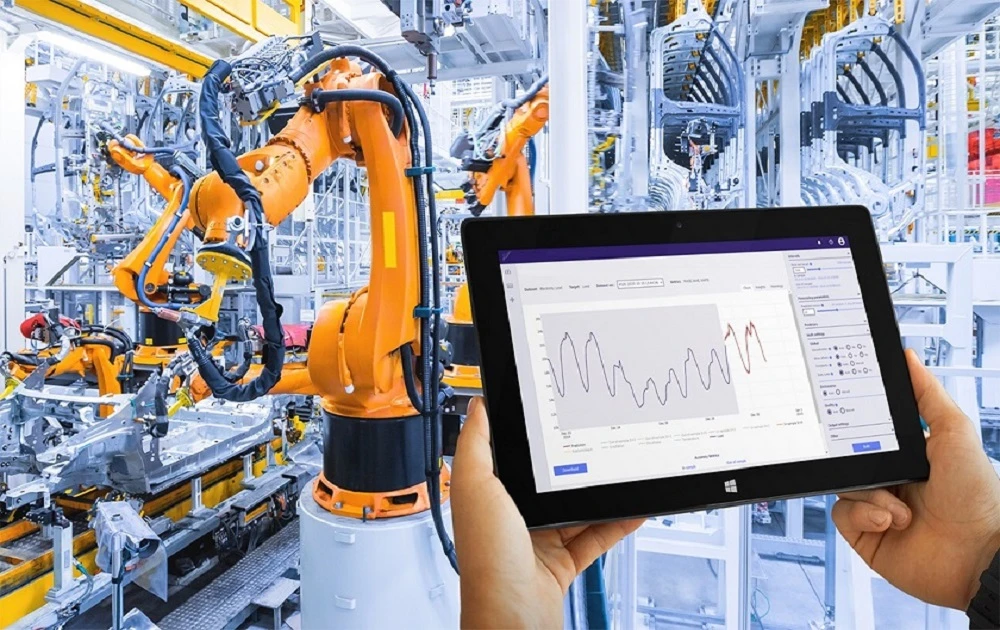Data analysis can help manufacturers improve productivity and streamline assembly processes. The advanced analytical approach gives corporations with overcapacity a competitive advantage by helping them to better manage their production systems and reallocate resources in real time. It reinforces ongoing efforts to continuously improve at a time when manufacturers have exhausted other ways to increase productivity.
The development of the analytics from descriptive to predictive analytics has made the industry aware of the advantages it can derive from the volume of data. The manufacturing industry’s motto is to move from a metric sector to an improved decision-based, data-driven use of statistics.
The role of big data in manufacturing is growing for a variety of reasons, including the availability of qualified personnel, competitive advantages, and sustainable manufacturing. The results of the big data analysis encourage the manufacturing industry not only to exploit the full potential of the technology.
Big data has found its purpose in a number of applications, such as improving manufacturing, quality assurance, and managing supply chain efficiency. Today, manufacturers strive to identify their ideal production processes by the power of data. The industry is trying to adopt the concept of the “intelligent industry,” where data generation and visualisation take place in real time.
Industry 4.0 is revolutionising the way companies manufacture, improve and distribute their products. With the rapid development of AI, advanced analytics, robotics, and emerging IoT-powered sensors and devices, it offers manufacturers the ability to collect, process and use data for daily operations. Several industries are undergoing a digital transformation to streamline processes.
The explosion of data-driven manufacturing has created many new challenges and headaches for manufacturers. Manufacturers must integrate technologies such as the Internet of Things (IoT), cloud computing, analytics, artificial intelligence and machine learning into their production operations and operations.
Manufacturing data can be generated from machine sensors, operator inputs, manufacturing quality systems, ERP and MES systems and more. According to McKinsey & Co. Advanced Analytics, manufacturers can delve into historical process data to determine patterns and relationships between individual process steps, input factors and optimizations for factors that have been found to have the greatest impact on yield. Manufacturing Analytics makes these findings available to CEOs and workshop employees.
The processing industry generates enormous amounts of data, but many do not use them. Big data in manufacturing is defined by the huge amounts of data that factories collect and the analytical tools that are used to convert that data into actionable insights. The term “big data” was coined in 2005 by Roger Mougalas to refer to a large amount of data that requires more computing power than an average business intelligence tool can handle.
Manufacturing had a market value of $90,465 million in 2019 and is expected to reach $45.5 billion by 2025. The manufacturing sector is constantly under pressure to increase profitability in a highly competitive international market. Definition is not only tied to manufacturing products, but also to the use of technology to optimize business processes. Thanks to cheap computing power and advances in analytics, process manufacturers are deploying enormous amounts of data, collecting information from multiple data sources and using machine learning models and visualization platforms to find new ways to optimize their processes, from sourcing raw materials and sales processes to their end products.
Manufacturing executives understand the importance of processes, and a study by KRC Research found that 67 percent of manufacturing executives plan to invest in data analysis in the face of cost-cutting pressures in a volatile climate. Big data is indispensable to achieve productivity and efficiency gains, gain new insights and drive innovation. With Big Data Analysis for Manufacturing, manufacturers can discover new information and identify patterns that will enable them to improve processes, increase supply chain efficiency and identify variables that influence production.
Existing tools offer useful help in understanding and analyzing manufacturing data. In other fields, understanding manufacturing process data requires tools to optimize this understanding. Insights can control every aspect of the manufacturing process, from buying and quality control to machine operation and maintenance, allowing production managers to work with a smaller workforce.
While traditional business intelligence tools can help companies understand their manufacturing processes, they do little to enable them to take operational control and implement the insights gained. Manufacturers rely on big data analyses for predictive maintenance in the workshop, but many do not collect the necessary data. While companies are sitting on huge amounts of data, they lack the means to gain relevant insights into their production process-related data.
With the evolution of the Third Industrial Revolution, Industry 4.0 factories have evolved from computer-controlled and automated production lines to networked systems. The rapid expansion of sensors and other instruments found in refrigerators and door locks requires strong data and operating platforms to monitor and manage production lines.
The network-ready IIoT consists of sensor nodes that record manufacturing data, processes, inventories, devices, tools and products. The volume of this data is transmitted over the network via IIoI gateways connected to the cloud. Manufacturing employees receive results in the form of visualizations, models and easy-to-read data embedded in common workflow portals.
Manufacturing analyses can help manufacturing companies increase productivity and profitability by leveraging their vast amounts of data. Machine learning models and visualization tools allow manufacturers to gain insights from their data to optimize processes and maximise performance. It provides a competitive advantage to decision makers by digitizing companies, optimizing costs, improving quality, accelerating innovation and redefining the customer experience.
The Manufacturing Analysis Journey aims to turn the data you collect from your manufacturing data into insights that can be translated into actions that affect the business. Big Data Analytics Manufacturing Industry Market Study 2018 – 2026. The market for the production of big data analytics is a market in which it will grow by 30.9% over the next five years. To know about our Data Analytics competencies kindly reach us at inquiry@itcube.net or visit www.itcube.net

